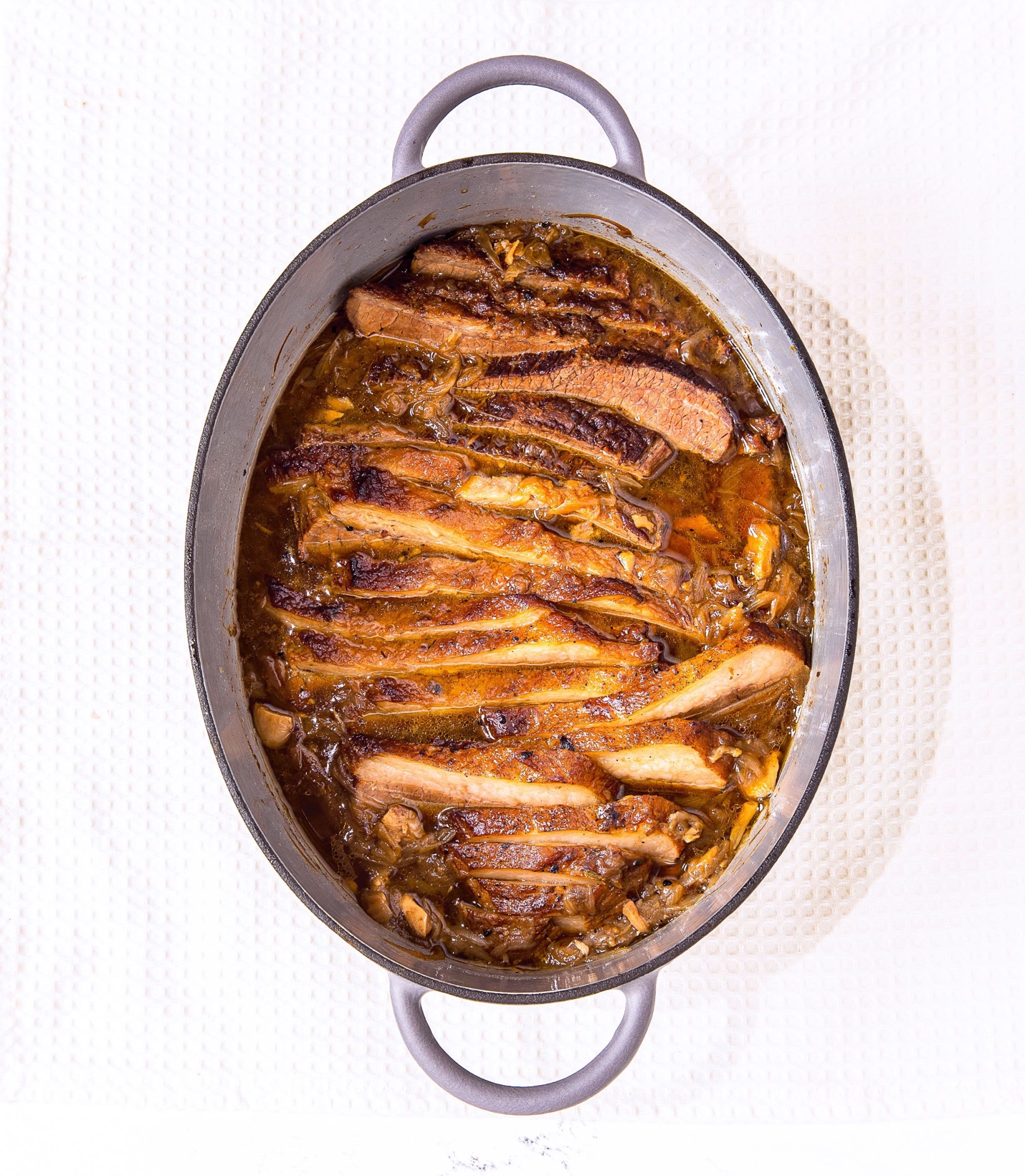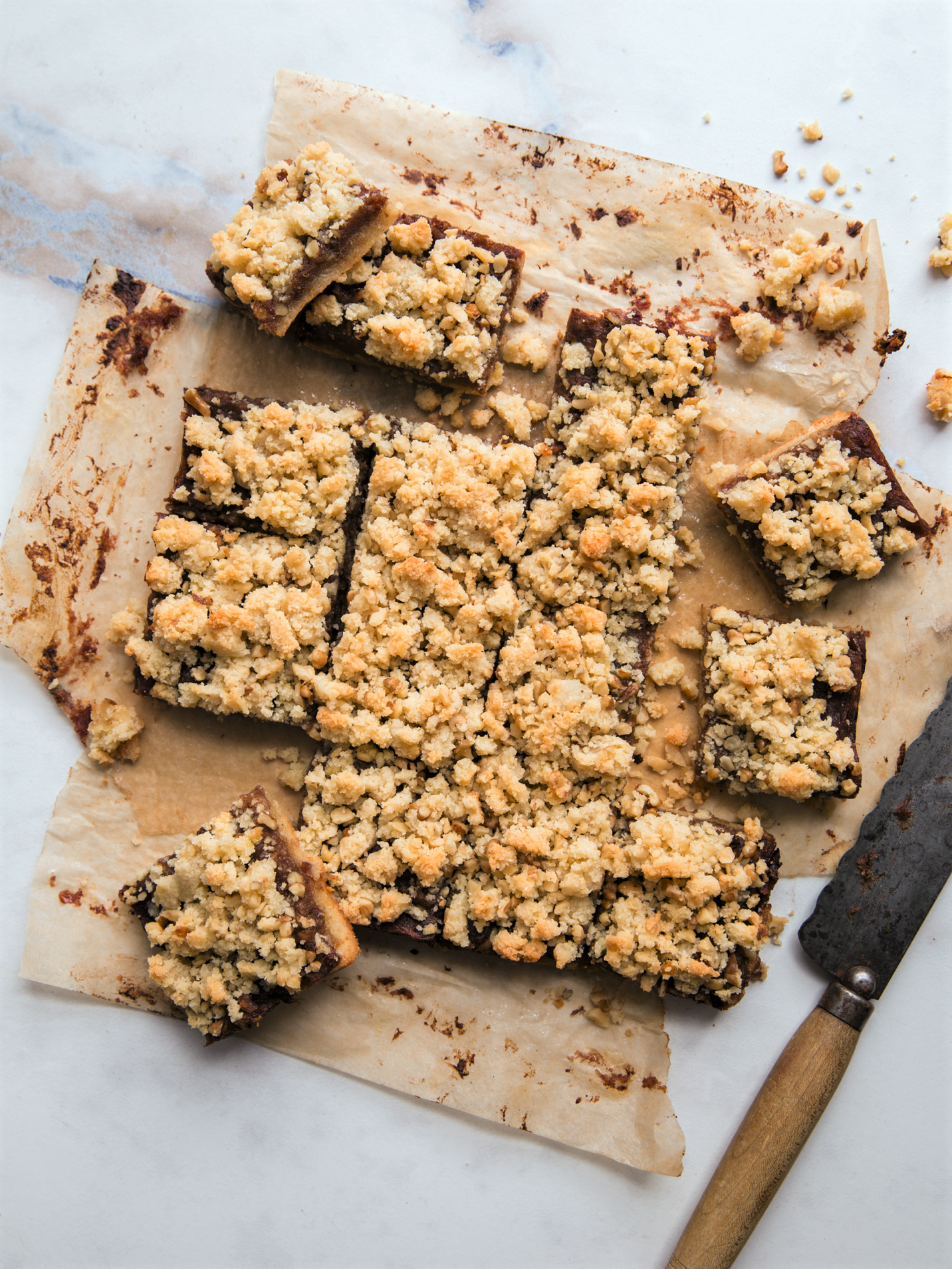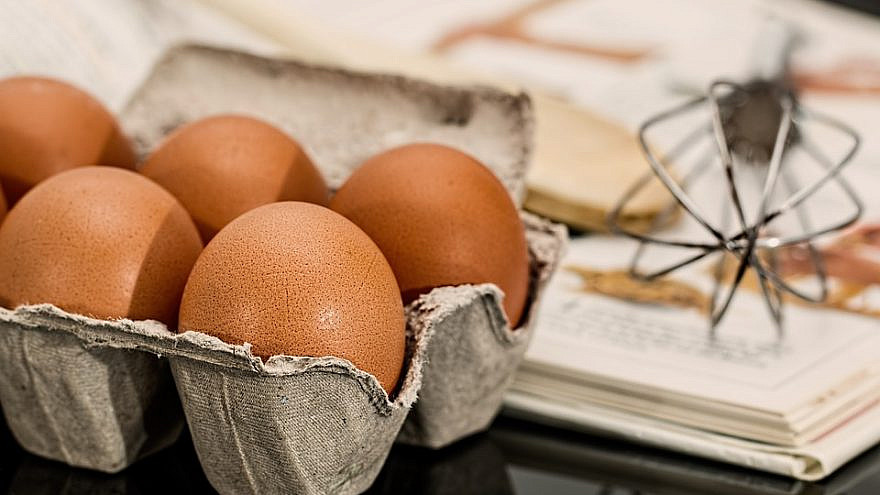|
Getting your Trinity Audio player ready...
|
( JNS) Growing up in Morocco, Levana Kirschenbaum felt Passover approaching weeks in advance. It wasn’t a good feeling. “My mother was completely obsessed and paranoid about the cleaning,” she says. “Every crumb, every wrapper—we felt like we were on the scene of a crime. We had to cover our tracks.”
Now a chef in New York City, Kirschenbaum takes a much more relaxed approach to Passover prep. Beginning a week before the holiday, she recruits several helpers, cleans the house “task-force style” in three days, then turns to the cooking. “I don’t see any marriage that could survive what my family did,” says Kirschenbaum.
A holiday designed to transmit tradition from one generation to another, Passover also carries significant emotional baggage: The cleaning can be burdensome, and even the most creative chefs may find the prohibition on grain-based foods, well, deflating. For many young Jews, it’s a pekel (from the Yiddish, meaning a “weight” or “package”) they’d rather not shoulder. “In my mother’s generation, there was this idea that this is what we do because this is what we’ve always done,” says Jake Cohen, chef and author of Jew-ish: Reinvented Recipes From a Modern Mensch. “I’ve always come from a place of ‘why?’ Why do we do this, and how does this serve me?”
When it comes to the eight days of Passover, which begins this year at sundown on April 5, Cohen says he doesn’t get caught up in the details. “Passover is a really incredible exercise in gratitude for freedom,” he says. “When people get so stressed about these things, I’m like, you guys are losing the point.”
Like other Jewish chefs of his generation, Cohen tries to lighten the burden—and infuse some joy—without letting go of tradition.
Chassidic customs were the most important ingredient in her mother’s Passover cooking, says Chanie Apfelbaum, food blogger and author of Totally Kosher. “I grew up in Chabad, and we peeled all our fruits and vegetables to make sure there was no chametz [‘leaven’]. We used only salt, no spices.”
Despite the restrictions, Apfelbaum says her mother managed to make dishes that were “humble, hearty and delicious.” She recalls mason jars stuffed with a mock chopped liver made with eggs and dates, Russian vinaigrette salad and poached pears.
In her own cooking, Apfelbaum channels simplicity while leaving the effort behind.
“Passover is a great time to go back to eating clean, delicious food like roasted vegetables with olive oil and salt,” she says. “There are things that we shouldn’t change. Foods that we grew up with are important, and at the same time, we can scale back. You don’t have to stand there whipping tons of egg whites.”
‘Glorification of everything seasonal’
The customs were different in Kirschenbaum’s childhood home, and Morocco offered a larger variety of produce than Chabad’s Eastern European Passover fare. But the emphasis on simplicity was the same.
“What I remember very, very fondly was the glorification of everything that was seasonal,” says Kirschenbaum, author of Levana’s Whole Foods Kitchen. “Lamb, sunchokes, artichokes, and tiny potatoes; they all went into the pot for a tagine of some sort.”
For many chefs, cooking for Passover during COVID was a clarifying experience, pushing them back to the essentials in a way that they liked.
After three decades of hosting lavish seders, Kirschenbaum retired from Passover cooking to spend the holiday with her children. When COVID struck, however, she found herself unexpectedly back in the kitchen, grasping for a dessert recipe. “There’s an old Arabic proverb: hunger teaches you frugality; nakedness teaches you sewing,” she says. “COVID taught me resourcefulness.”
With the ingredients she had on hand, she pulled together a rich Coconut Chocolate-Chip Loaf made with fruit jam, still a favorite among her readers.
‘The natural progression of our Jewish life’
For Cohen, the diversity of Passover customs is an opportunity for creativity. “I’m Ashkenazi; my husband is Mizrahi,” he says. “Now we get to incorporate everything into something that is uniquely us.”
Adaptation has long been an essential characteristic of Jewish cooking, he notes, as Jews incorporated and modified dishes from their host cultures. ”Some of that adaptation is coming from a place of trauma—we were persecuted and moved someplace and then adapted—I’m coming from a place of joy. This is the natural progression of our Jewish life.”
Still, Cohen keeps his Passover menu within the traditional goalposts: “I know what I have to make so that my bubby doesn’t have a conniption.” The brisket will go into the oven on Monday; the chicken soup will be done on Tuesday. “The day of, all I want to do is roast some veggies and cook some matzah balls,” he says. Preparing in advance, and keeping the menu simple, allows him to keep the focus on the seder itself.
The beloved Passover song “Dayenu” enumerates every step in the Israelites’ liberation from Egypt, notes Cohen. “If only one of those miracles had happened, we would still be slaves, but we’re still extending gratitude for that.
“People get so obsessed with being the super host and doing everything,” he says. “Whatever you can do, whatever you decide to do, it’s enough.”

French Onion Brisket (Meat)
Serves 10-12
Prep Time: 20 minutes, plus cooling time and overnight chilling
Cook Time: 3 hours 40 minutes
A play on French onion soup using tons of caramelized onion and herbs to braise a seared brisket until super tender and full of umami with a hint of sweetness. All items are kosher for Passover.
Ingredients:
1 (5- to 6-pound) beef brisket, fat cap intact
kosher salt and freshly ground black pepper
3 Tbsp. vegetable oil
5 large sweet onions, thinly sliced
12 garlic cloves, smashed and peeled
1 cup Calvados or sherry
3 cups chicken stock
6 sprigs thyme
4 sprigs sage
Directions:
Preheat the oven to 325 degrees.
Season each side of the brisket with 2 heavy pinches each of salt and pepper. In a large Dutch oven, heat the oil over medium-high heat. Sear the brisket, turning it as needed, until golden brown, about 15 to 20 minutes. Transfer the brisket to a platter.
Reduce the heat to medium; then add the onions and garlic to the pot. Cook, stirring often, until softened and caramelized, about 20 to 25 minutes. Add the Calvados, then stir continuously with a wooden spoon for 1 minute to scrape up any browned bits on the bottom of the pot.
Stir in the stock and 2 heavy pinches each of salt and pepper, then return the brisket to the pot. Tie together the thyme and sage sprigs with a small piece of butcher’s twine (tying is optional, but makes it much easier to remove the herbs after cooking) and nestle the herb bundle in the pot. Bring to a simmer, then cover the pot and transfer it to the oven. Cook for 3 hours to 3 hours 30 minutes, until very tender when pierced with a fork. Remove from the oven and let cool completely, then refrigerate overnight.
The next day, skim off and discard any fat, if desired, and discard the herbs. Transfer the brisket to a cutting board and cut it across the grain (perpendicular to the fibers you’ll see running through the brisket) into ¼- inch-thick slices. Return the meat to the sauce and heat over medium heat until warmed through.
Taste and adjust the seasoning with salt and pepper, then serve.
Excerpted from JEW-ISH: A COOKBOOK: Reinvented Recipes from a Modern Mensch ©2021 by Jake Cohen.

Coconut Chocolate-Chip Cake (Pareve)
Makes 6 loaves
Ingredients:
1 cup coconut oil (or olive oil or vegetable oil)
4 eggs
2 cups pareve dark chocolate chips, the higher the cocoa content the better
2 cups sweetened shredded coconut (unsweetened is even better, but in this case, add a little sugar to the batter)
1 cup strawberry or apricot jam
2 cups almond meal
1 cup tapioca starch (or potato starch)
good pinch of salt
Directions:
Preheat the oven to 350 degrees.
Mix all ingredients thoroughly by hand, and pour in six, small loaf pans.
Bake for about 45 minutes or until a knife inserted in the center comes out clean.
From Levana Kirschenbaum’s blog: Levanacooks.

Charoset Bars (Pareve)
Serves 12
Ingredients:
3 cups superfine blanched almond flour (technically not flour but ground almonds)
¾ cup sugar
½ cup walnut or grapeseed oil
1 extra-large egg
1½ tsp. kosher salt, divided
1 ripe pear or Granny Smith apple, peeled, cored and roughly chopped
14 plump Medjool dates, pitted (about 10 ounces)
¼ cup dry red wine
¹⁄8 tsp. ground cinnamon
½ cup chopped walnuts (about 2 ounces)
Directions:
Preheat the oven to 350 degrees.
Line an 8×8-inch pan with parchment paper.
In a medium bowl, stir together the almond flour, sugar, oil, egg and 1 teaspoon of the salt until combined into a smooth dough. Remove 1 cup of the dough and set aside.
Using your hands, press the remaining dough into the bottom of the prepared pan in an even layer. Bake for 12 minutes, until lightly puffed. Cool for 5 minutes.
In the bowl of a food processor, pulse together the pear, dates, wine, cinnamon and remaining ½ teaspoon salt until pasty, scraping down the sides of the bowl with a rubber spatula as needed (it should resemble mortar, just like the story of the Exodus).
Add the walnuts to the reserved 1 cup of dough and mix with your fingers to combine. Spread the charoset filling over the cooled baked dough and crumble the walnut mixture over top.
Bake for 18 minutes, until browned around the edges. Cut the bars into squares and store them in an airtight container (use parchment paper if layering). Store at room temperature for up to two days or refrigerate for up to a week.
To freeze, wrap squares individually in plastic wrap, transfer them to a zip-top bag and freeze for up to two months.
“Totally Kosher” Copyright ©2023 by Chanie Apfelbaum. Photographs copyright ©2023 by Chanie Apfelbaum. Published by Clarkson Potter, an imprint of Random House.




